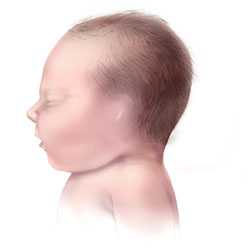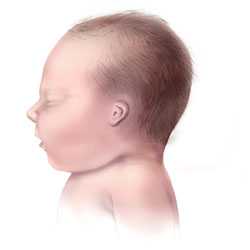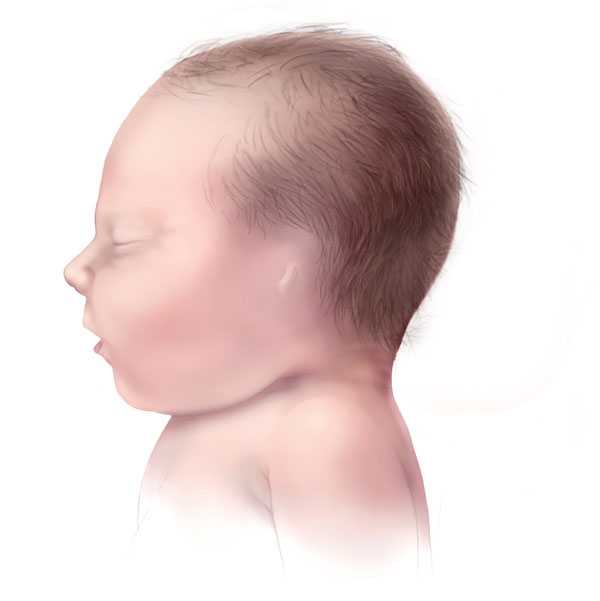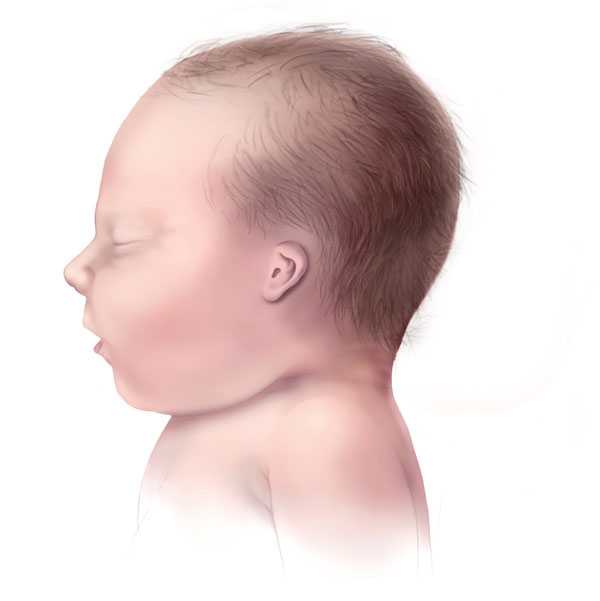July: National Cleft and Craniofacial Awareness and Prevention Month
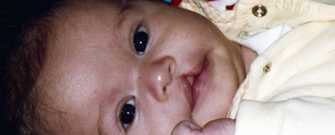
A baby with cleft lip
July is National Cleft and Craniofacial Awareness and Prevention Month—an observance by individuals and organizations to help make people more aware of and give them information about cleft and craniofacial defects and other conditions that can affect the head and face. Throughout the year, the National Cleft and Craniofacial Awareness and Prevention Month and its partner organizations maintain a variety of programs that promote public awareness and offer support and education services for patients and families.
Craniofacial defects ― such as orofacial clefts, craniosynostosis, and microtia and anotia ― have a significant public health impact. You can learn more below about what the Centers for Disease Control and Prevention (CDC) is doing to identify the causes of craniofacial defects and help improve the lives of infants and children with these conditions.
Understanding Craniofacial Defects
Craniofacial defects are conditions present at birth that affect the structure and function of a baby’s head and face. Two of the most common craniofacial defects are orofacial clefts, which occur when the lip and mouth do not form properly, and craniosynostosis, which happens when the bones in the baby’s skull fuse too early. Microtia is when the external portion of the ear does not form properly, and anotia occurs when the external portion of the ear is missing. Treatments and services for children with craniofacial defects can vary depending on the severity of the defect; the presence of associated syndromes or other birth defects, or both; as well as the child’s age and other medical or developmental needs. Children with certain craniofacial defects can have a greater risk for physical, learning, developmental, or social challenges, or a mix of these. Craniofacial defects have significant effects on families and the health care system:
- Each year, about 4,400 infants in the United States are born with a cleft lip with or without a cleft palate and about 2,700 infants are born with a cleft palate alone (1).
- About 4 infants per 10,000 live-births in the metropolitan Atlanta, Georgia, area are born with craniosynostosis (2).
- Recent studies have found that direct medical and health care use and average costs per child were a lot higher for children with orofacial clefts than for children of the same age without these conditions (3–5).
CDC is working to learn more about craniofacial defects by monitoring and doing research to guide prevention efforts. CDC and its partners also work to better understand health care use and improve access to services and the quality of life of infants and children with these conditions.
Surveillance of Craniofacial Defects
CDC helps support state-based birth defects programs surveillance systems to track and monitor birth defects, including craniofacial defects. Many states in the United States have birth defects surveillance programs that include some craniofacial defects in their monitoring efforts. Information from these programs and CDC partners is used to:
- Understand the risk factors for craniofacial defects.
- Identify disparities in the occurrence of craniofacial defects.
- Help ensure children with craniofacial defects get medical care and services when they need them, including referral to cleft and craniofacial teams, early intervention services (e.g., services, support and education to young children with an established condition or special need or who are “at risk” for developing a delay or special need), and special education.
- Examine associated health service use and costs.
- Better understand and help improve the quality of life and outcomes of infants and children with craniofacial defects.
Health care programs, state and local health departments, and policy makers can use this information to plan for services for children and families. Information from birth defects surveillance systems also can provide a basis for research studies designed to identify possible causes of and opportunities for preventing craniofacial defects.
Identifying Preventable Causes
Did You Know?
Together, cleft palate alone and cleft lip with or without cleft palate often are referred to as “orofacial clefts”.
CDC funds the National Birth Defects Prevention Study (NBDPS), the largest population-based study in the United States to identify the risk factors for and potential causes of birth defects, including orofacial clefts, craniosynostosis, and microtia and anotia. Population-based means that the researchers look at all babies with selected birth defects that live in the study region to get a complete picture of what is happening within the population. Population-based studies like the NBDPS determine the frequency of disease across a wide group of people, which is important to make sure that study results relate to the entire population of the United States.
Recently, CDC researchers and NBDPS partners have reported important findings about some risk factors for craniofacial defects:
- Diabetes ― Women who have diabetes before they get pregnant have been shown to be more at risk of having a baby with anotia or microtia or a cleft lip with or without cleft palate (6).
- Smoking ― Women who smoke anytime during the month before they get pregnant through the end of the third month of pregnancy have been shown to be more likely to have a baby with a cleft lip with or without cleft palate (7).
- Maternal thyroid disease ― Women with thyroid disease or who are treated for thyroid disease while they are pregnant have been shown to be at higher risk of having an infant with craniosynostosis (8).
- Certain medications ― Women who report using clomiphene citrate (a fertility medication) just before or early in pregnancy have been shown to be more likely to have a baby with craniosynostosis (9).
Next Steps in Prevention and Research
Did You Know?
Women can take steps before and during pregnancy to reduce the risk of having a baby born with a birth defect. Such steps include taking a daily multivitamin with folic acid (400 micrograms), not smoking, and not drinking alcohol during pregnancy.
CDC is one of the few agencies that can study when and where disease happens among the general population of the United States. This means that CDC has a good chance of identifying risk factors for craniofacial defects. CDC and its partners can use what they learn to develop ways to prevent these conditions. These findings also can be used to help improve the quality of life for people living with these conditions and their families. Although researchers are learning more about these defects, much work remains to be done. For example, researchers are:
- Looking at the possible roles of other risk factors, such as certain medicines women take while they are pregnant, to prevent craniofacial defects.
- Looking at ways to decrease the number of women with uncontrolled diabetes during pregnancy to prevent craniofacial defects.
- Evaluating short- and long-term outcomes, non-medical and other costs, access to services, receiving services quickly, use of early intervention and special education services, and quality of life to find ways to help support the health and wellness of affected infants and children.
CDC researchers and collaborators examine the causes, health service use and costs, quality of life, and outcomes of infants and children with craniofacial defects. These types of studies highlight the need for birth defects tracking and strategies for women of childbearing age to help prevent craniofacial defects. Strategies include helping control diabetes and preventing tobacco and alcohol exposures during pregnancy ― all actions individuals can take that hold promise for preventing birth defects, including craniofacial defects.
Resources on Craniofacial Defects
- American Cleft Palate-Craniofacial Association
- AmeriFace(previously AboutFace USA)
- Cleft Advocate
- Cleft Palate Foundation
- FACES-The National Craniofacial Association
- March of Dimes
- National Cleft and Craniofacial Awareness and Prevention Month
- myFace
- National Institute of Dental and Craniofacial Research
More Information
- CDC’s Birth Defects Information
- CDC’s Pregnancy Information
- CDC’s National Center on Birth Defects and Developmental Disabilities
- National Birth Defects Prevention Study
- National Birth Defects Prevention Network
- Steps for Healthier Babies
References
- Parker SE, Mai CT, Canfield MA, Rickard R, Wang Y, Meyer RE, for the National Birth Defects Prevention Network. Updated national birth prevalence estimates for selected birth defects in the United States, 2004-2006. Birth Defects Res A Clin Mol Teratol. 2010;88:1008–16.
- Boulet SL, Rasmussen SA, Honein MA. A population-based study of craniosynostosis in metropolitan Atlanta, 1989-2003. Am J Med Genet A. 2008;146A:984–91.
- Cassell CH, Meyer R, Daniels J. Health care expenditures among Medicaid enrolled children with and without orofacial clefts in North Carolina, 1995-2002. Birth Defects Res A Clin Mol Teratol. 2008;82:785–94.
- Weiss J, Kotelchuck M, Grosse S, Manning SE, Anderka M, Wyszynski DF. Hospital use and associated costs of children ages zero-to-two years with craniofacial malformations in Massachusetts. Birth Defects Res A Clin Mol Teratol.2009;85:925–34.
- Boulet SL, Grosse SD, Honein MA, Correa-Villaseñor, A. Children with orofacial clefts: health care use and costs among a privately insured population. Public Health Rep.2009;124:447–53.
- Correa A, Gilboa SM, Besser LM, Botto LD, Moore CA, Hobbs CA. Diabetes mellitus and birth defects. Am J Obstet Gynecol. 2008;199:237.e1–9.
- Honein MA, Rasmussen SA, Reefhuis J, Romitti PA, Lammer EJ, Sun L. Maternal smoking, environmental tobacco smoke, and the risk of oral clefts. Epidemiology. 2007;18:226–33.
- Rasmussen SA, Yazdy MM, Carmichael SL, Jamieson DJ, Canfield MA, Honein MA. Maternal thyroid disease as a risk factor for craniosynostosis. Obstet Gynecol. 2007;110:369–77.
- Reefhuis J, Honein MA, Schieve LA, Rasmussen SA, and the National Birth Defects Prevention Study. Use of clomiphene citrate and birth defects, National Birth Defects Prevention Study, 1997–2005. Hum Reprod. 2011;26:451–7
- Page last reviewed: November 21, 2014
- Page last updated: November 21, 2014
- Content source:


 ShareCompartir
ShareCompartir
